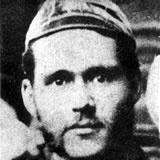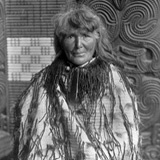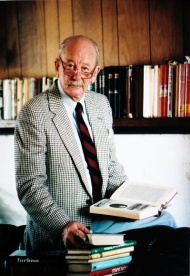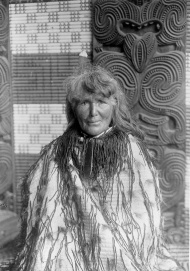Events In History
-
 30 August 1903Four killed by Rotorua geyser
30 August 1903Four killed by Rotorua geyserGuide Joseph Warbrick and three tourists were killed instantly when Waimangu geyser, then one of the largest and most active in the world, erupted unexpectedly. Read more...
 Joe Warbrick
Joe Warbrick
Joe Warbrick was the captain, coach and selector for the New Zealand Natives' tour of Britain in 1888-89, the first New Zealand representative rugby team to tour beyond Australia.
Read more... Sophia Hinerangi (Guide Sophia)
Sophia Hinerangi (Guide Sophia)
Best known as ‘Guide Sophia’ she was the principal tourist guide of the famous Pink and White Terraces at Lake Rotomahana.
Read more... Don Stafford
Don Stafford
Historian Don Stafford spent most of his long career championing the history and heritage of his beloved city, Rotorua
Read more...Related keywords
- public service
- WW1 home front
- ohinemutu
- maori art
- nurses
- WW1
- carving
- te arawa
- don stafford
- disasters
- tarawera eruption
- volcanic activity
- roadside stories
- rugby
- joe warbrick
- tourism
- ngati ruanui
- sophia hinerangi (guide sophia)
- royalty
- royal tours
- whakarewarewa
- flags
- prince of wales
- 1920s
- voting
- maori
- elections
- queen elizabeth
- guide rangi
- railways
- railway stations
- south african war
- maori in war
- maori battalion
City on the southern shores of Lake Rotorua. Rotorua is unusual among New Zealand cities in being neither a port nor originally a farm service centre. Rotorua was built in the early 1880s by the government, as a town for tourists visiting the ‘hot lakes’. It was laid out on the Pukeroa–Oruawhata block, land leased from Ngāti Whakaue near the Māori lakeside settlement of Ōhinemutu. This arrangement with the tribal owners broke down, and the government became the sole owner in 1888. The arrival of the railway in 1894 spurred growth. The government developed a European-style spa with ornamental gardens, and bathing and therapeutic facilities. After the Second World War, growth was also fostered by forest, farm and hydroelectricity development.



















